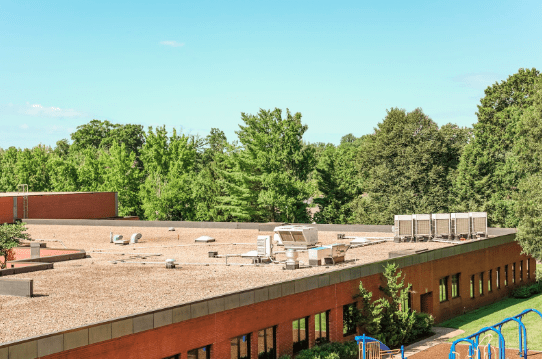An Overview of VRF Systems and Their Benefits

In recent years, businesses have been looking for more energy-efficient solutions to their heating and cooling needs. Fortunately, advancements in technology have made it possible to provide commercial buildings with just that. One such system is the Variant Refrigerant Flow (VRF) system. In this blog, we will look at what VRF systems are, how they work, and the benefits they offer commercial buildings.
What is a VRF System?
A VRF system is an advanced air conditioning system that uses refrigerant as its cooling medium. This type of system utilizes multiple indoor units connected to an outdoor compressor/condenser unit via refrigerant piping and electrical wiring. The individual indoor units can operate independently or together, depending on the needs of each space in the building being served by the system. This means that different temperatures can be set for different areas of the building at once—a feature not available with traditional HVAC systems.
How Does a VRF System Work?
VRF systems are designed to cool or heat large commercial spaces efficiently by using one compact outdoor unit, instead of several separate ones like traditional HVAC systems require. The individual indoor units are connected to a single outside compressor/condenser unit via refrigerant pipes carrying either cool or hot refrigerant, depending on which mode the system is in — cooling or heating respectively.
The outside unit then pumps this refrigerant through the pipes as needed to maintain an even temperature throughout the building by regulating how much refrigerant is sent back out through the outside unit again, based on room temperature readings taken by sensors located in each space in the building being served by the system. This process allows for optimal efficiency and energy savings compared to traditional HVAC systems which often run at maximum capacity regardless of actual need due to their inability to regulate individual rooms separately from one another.
Benefits of Using a VRF System Over Traditional HVACs
VRF systems offer many benefits when compared to traditional HVAC systems, including versatility, cost-effectiveness, energy efficiency, improved air quality, quiet operation, flexibility, and scalability.
Unlike traditional HVAC systems that require large ducts running throughout an entire building, a VRF System only needs one small pipe connecting all indoor units together. This makes installation easy and fast compared to other systems, resulting in lower labor costs overall.
Cost-effectiveness comes from reduced installation costs since only one outdoor compressor/condenser unit needs to be installed, instead of multiple separate ones like with traditional HVAC systems.
Energy efficiency stems from increased regulation capabilities. Improved air quality comes from better filtration and less dust accumulation, and quiet operation occurs due to fewer moving parts. The flexibility aspect stems from being able to use multiple indoor units within one area, and scalability means that more areas can be added later without having to buy additional equipment.
VRF Systems offer many advantages over traditional HVAC systems when it comes to commercial buildings. Not only do they allow users to easily switch between heating and cooling functions with minimal effort or maintenance required, but they also offer increased efficiency resulting in lower energy bills over time, as well as improved air quality due to less dust buildup within their ducts from frequent usage.
Contact Us Today!
With all these benefits in mind, it’s no wonder why Paramount Mechanical offers these services! If you’re looking for an upgrade or replacement for your existing HVAC system, then look no further than Paramount Mechanical’s expert installation services for all your commercial needs! Contact us today for more information on how we can help you get started!